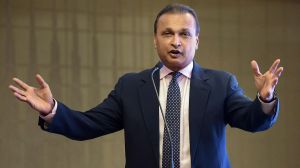By Anupam Biswal
In today’s digital age, technology’s transformative influence is sweeping across every facet of our lives, with healthcare being no exception. One of the most remarkable feats in recent times is the successful implementation of telemedicine, which has bridged the healthcare divide between urban centers and remote villages. This achievement goes beyond mere medical consultations; it signifies a profound transformation that reduces disparities and exemplifies technology’s potential in healthcare.
At the heart of this achievement was the recognition of the pressing healthcare challenges faced by remote villages. Inaccessible terrain, inadequate medical infrastructure, and a shortage of healthcare professionals left these areas with limited access to quality care, emphasizing the glaring discrepancy in healthcare facilities between urban and rural settings. This realization laid the groundwork for the innovative technological solution that would follow in the healthcare continuum.
Telemedicine emerged as a beacon of hope, enabled by high-speed internet and digital communication tools. This approach sought to connect remote villages with specialized medical professionals from urban centers through virtual consultations. The concept was elegantly simple yet held immense power to bridge the healthcare gap with the potential to address health equity in the future.
To bring telemedicine to remote villages required a comprehensive infrastructure overhaul. The establishment of telecommunication networks and internet connectivity was paramount. Collaborations between government bodies, private sector stakeholders, and NGOs played a pivotal role in making this transformation a reality. The creation of telemedicine centers, equipped with the necessary technological tools, became the linchpin of this transformation.
Empowering local healthcare workers was another vital facet. These individuals, already familiar with the community’s needs and challenges, were trained to operate telemedicine equipment, assist patients during virtual consultations, and ensure the seamless flow of information between patients and specialists. This not only enhanced the quality of care but also created local employment opportunities.
However, overcoming skepticism and resistance posed a significant challenge. Through community engagement programs, awareness campaigns, and firsthand testimonies from individuals who benefitted from telemedicine services helped break down the barriers and nudge acceptance to the cost-effective quality approach. The remarkable aspect of telemedicine is its capacity to provide specialized medical consultations regardless of geographical barriers. Patients in remote villages can now consult renowned specialists from distant cities without enduring arduous travel. This newfound access to expertise was unprecedented and showcased the true power of technology in transforming healthcare digitally. In this digitization effort, data security and patient privacy were paramount considerations. Robust encryption, secure communication platforms, and adherence to healthcare data regulations were fundamental in fostering trust among both patients and medical professionals.
The impact was profoundly positive: stories of success emerged from this innovative approach. Patients with limited access to medical care could now receive timely diagnoses and treatment plans. Chronic conditions were managed more effectively, maternal and child health improved, and preventive care became a reality, leading to an overall positive transformation of remote communities.
The success quickly garnered attention from policymakers and healthcare leaders, revealing the model’s scalability. With adaptations, it could be replicated in other underserved regions, both nationally and globally. Moreover, this triumph spurred research and innovation in remote diagnostics and treatment monitoring.
In conclusion, the telemedicine triumph that facilitated specialized medical consultations for a remote village underscores technology’s power in bridging healthcare gaps. This approach not only addressed medical challenges but also tackled social and economic disparities. The fusion of technology, infrastructure, community involvement, and specialized medical expertise showcased the potential of a holistic approach to revolutionizing healthcare delivery. As we look forward, this achievement serves as a poignant reminder of what can be accomplished when innovation converges with compassion, technology intertwines with humanity, and the realm of possibilities knows no bounds.
(The author is a co-founder, Last Mile Care (1Care); entrepreneur and development sector professional. Views expressed are personal and do not reflect the official position or policy of the FinancialExpress.com.)








